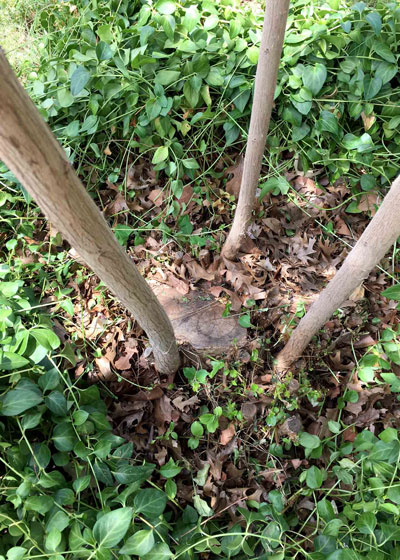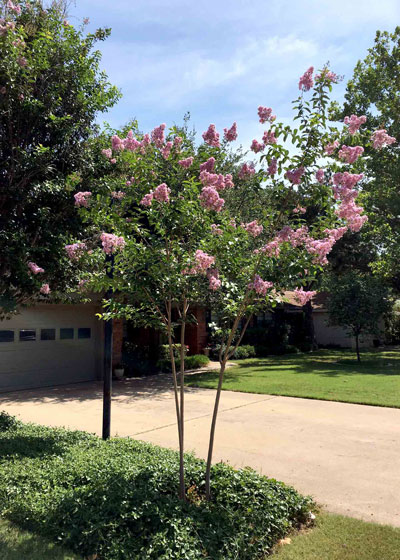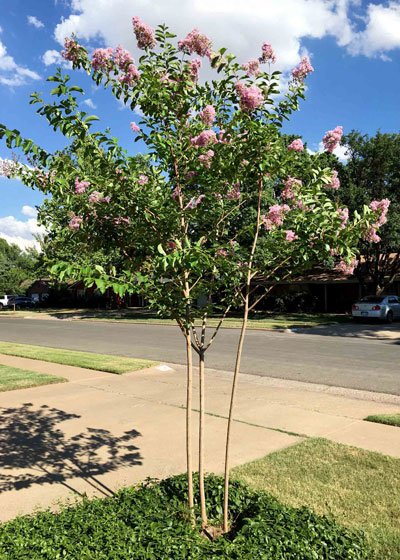A Second Chance at Beauty
As long as I live, I will never understand why people feel the need to mutilate their crape myrtles. I even saw it in commercial landscapes where people are supposed to know better. Really sad.

Topping is the fastest way to ruin a beautiful crape myrtle. There is no good justification!
I’ve heard lame excuses for topping like “It makes them bloom better,” or “They’re too tall,” or “Everybody else does it.” They’re all hooey. Topping crape myrtles leaves mangled, gnarly trunks that will forever be scarred.
Or, will they? Nationally recognized crape myrtle grower David Byers of Huntsville, Alabama (now retired), advised me many years ago to tell people with butchered crape myrtles to cut them completely to the ground, then to train the resprouts. “You’ll be amazed at how quickly they’ll look great again,” he said.
And so that has been my message ever since. I’ve seen plants in our Crape Myrtle Trails of McKinney medians that have been run over by cars. The roots stayed in place, and the plants came back with just a little training.
Beverly C., a Facebook friend from Lubbock, shared photos of her journey with me. I’m going to put time stamps on them as if we were starting the trimming process today.
Steps to success:
Winter 2019 – now: Cut the plant completely to the ground – as in “flush.” This is a great time to do so.

Old trunk was cut completely flush with the soil line.
Spring 2019: Wait for dozens of sprouts to come up from the plant’s base. You’ll see them starting to emerge by late March or April. After all, the root system is still intact and it has no top growth to support. Those sprouts will come zooming out of the ground.
Allow the thicket of little sprouts to develop. You’ll have dozens. Let them all grow.
Late Summer 2019: When the sprouts are 15 or 18 inches tall and starting to become ever so slightly woody, select the 10 or 12 best that are spaced most evenly around the old stump. Remove all the rest down to the ground.
Summer 2020: You’ll be able to narrow the field one more time by next summer. The new trunks will be the size of your fingers. Choose five to seven and remove the rest.

Formerly an eyesore, this crape myrtle looks like a handsome young tree that is really thriving.
Winter 2020/2021: Remove all the rest of the extras down to three or five trunks. (Odd numbers look best.) They will become your crape myrtle’s new trunks.
At that same time you may be ready to remove some of the side shoots as you try to retrain your crape myrtle into a tree form. You’ll also want to remove any additional new shoots that will try to emerge from the roots for the next couple of years. They’ll eventually give up.

Within a couple of years these three trunks will be as large as the old trunk was originally – and the plant will finally look loved!
